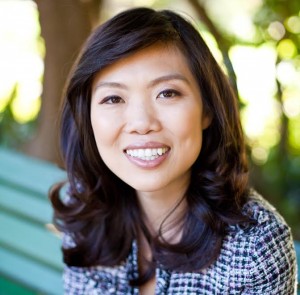
Jeena Cho
Each year, I receive the flood of marketing emails for the California Solo & Small Firm Summit. I glance at the speakers and my general impression is always this: maintaining the status quo. It’s the same group of overwhelmingly white male attorneys, presenting on the same topics. In the seven years I have been practicing in California, not once did I consider attending the Summit.
This year, I was invited to submit a proposal. I was excited to be invited, to bring a fresh perspective. As a bankruptcy attorney, author of LexisNexis’s How to Manage Your Law Office, and a mindfulness instructor with a semi-virtual law practice, I believe I bring a lot to the conversation on how to run a better, more modern and efficient solo practice.

Why Law Firms Are Moving Beyond The Billable Hour
Explore 5 expert-backed reasons law firms are rethinking the billable hour and how legal billing software is leading the way.
A couple of weeks ago, I received the following email:
Thank you for submitting a proposal(s) for The State Bar of California Solo and Small Firm Summit… Attached is a schedule of the final programs that have been accepted to go forward. If your program was not selected, please understand that we received over 95 program submissions for 31 total available timeslots.
It contained a spreadsheet of the selected speakers. I looked at the speaker’s list, and, not surprisingly, it was more of the same. Many speakers have been giving the same presentation annually for almost a decade — a lot of older, white male attorneys.
Not being chosen to speak is fine; some associations and trade groups find my proposals timely and relevant, some don’t. But in viewing the spreadsheet from the email about the speakers selected, here’s what I found.

Plugging The Profit Leaks: How Your Firm Can Stop Burning Money
Join the webinar on September 25th and learn some quick wins you can implement right away.
| Total Number of Speakers | Male | Female | White | Non-White |
| 52 | 36 | 16 | 48 | 4 |
| 69% | 31% | 92% | 8% |
As a matter of full disclosure, I am basing gender and race on information and photos I found on the speakers’ law firm websites. It’s possible a lawyer was categorized as “white” but may not identify him or herself as such.
I also noted that there is not a single Asian person on the speaker’s list. Despite having received 95 program submissions for the 31 slots, six speakers are on more than one panel — as many as four sessions.
Which brings me to this point: it is 2016 and the lack of diversity is frankly getting tiring. The client base we serve as solo attorneys is very diverse, yet, the conference for solo attorneys is anything but diverse.
I talk about this because the California Bar is considering some major changes right now. There is a pending movement to “split the lawyer oversight agency into a board focused on admissions and discipline and a nonprofit that would effectively serve as a trade association for attorneys,” reported The Recorder. In other words, the disciplinary section of the California Bar would be separated from all sections, such as solo and small, business, etc. There are many reasons for this potential separation, but one of them is financial.
Many voluntary bar associations are struggling to sustain, let alone grow their memberships. In particular, the younger lawyers simply do not see the value in joining voluntary bar associations. In California, attorneys are required to pay bar dues, which primarily fund the admissions and discipline arm of the bar association. However, the section memberships are completely voluntary and require payment of a separate fee.
In a recent American Lawyer article, it was reported that the American Bar Association membership lost 22 percent of dues-paying members since 2003.
Back in 1977, half of all lawyers belonged to the ABA; today that figure has shrunk to 27 percent. And it may get worse. Millennials—those 35 and younger—don’t like to join things, [Executive director] Rives noted in his speech. Only 13 percent of people under the age of 30 belong to professional organizations of any sort, he told the delegates. Compounding the challenge, the number of first-year law students is the lowest since 1973.
Bar associations can continue their current trend of offering more of the same or they can pivot. It is frankly discouraging that in a state that is as diverse as California, the bar association’s annual summit has 69 percent of its speakers who are male, and hardly any people of color.
I will close by acknowledging that the California Solo & Small Firm Summit is certainly not the only bar conference that lacks diversity. In fact, it is generally the norm that I am either the only woman on a panel or woman of color at many of the conferences where I speak.
I believe lawyers must be stewards of valuing diversity and inclusion. We can and should do much more to increase diversity in speakers — not just in terms of gender and race, but including the LGBT community, those with disabilities, and cross-sections of age groups. This allows for different perspectives and cross-pollination of ideas.
I find it hard to believe that in today’s world, only 8% of non-whites had something important and relevant to contribute at this year’s Summit. Bar associations must stop paying lip service to valuing diversity and actually demonstrate their commitment to diversity and inclusion by who they choose as speakers.
P.S. If you are a woman lawyer in the Bay Area, you are invited to the Shape the Law Unconference.
Jeena Cho is the author of The Anxious Lawyer: An 8-Week Guide to a Joyful and Satisfying Law Practice Through Mindfulness and Meditation (affiliate link). She is a contributor to Forbes and Bloomberg where she covers diversity/inclusion, resilience, work/life integration, and wellness in the workplace. She regularly speaks and offers training on women’s issues, diversity, wellness, stress management, mindfulness, and meditation. You can reach her at [email protected] or @jeena_cho on Twitter.